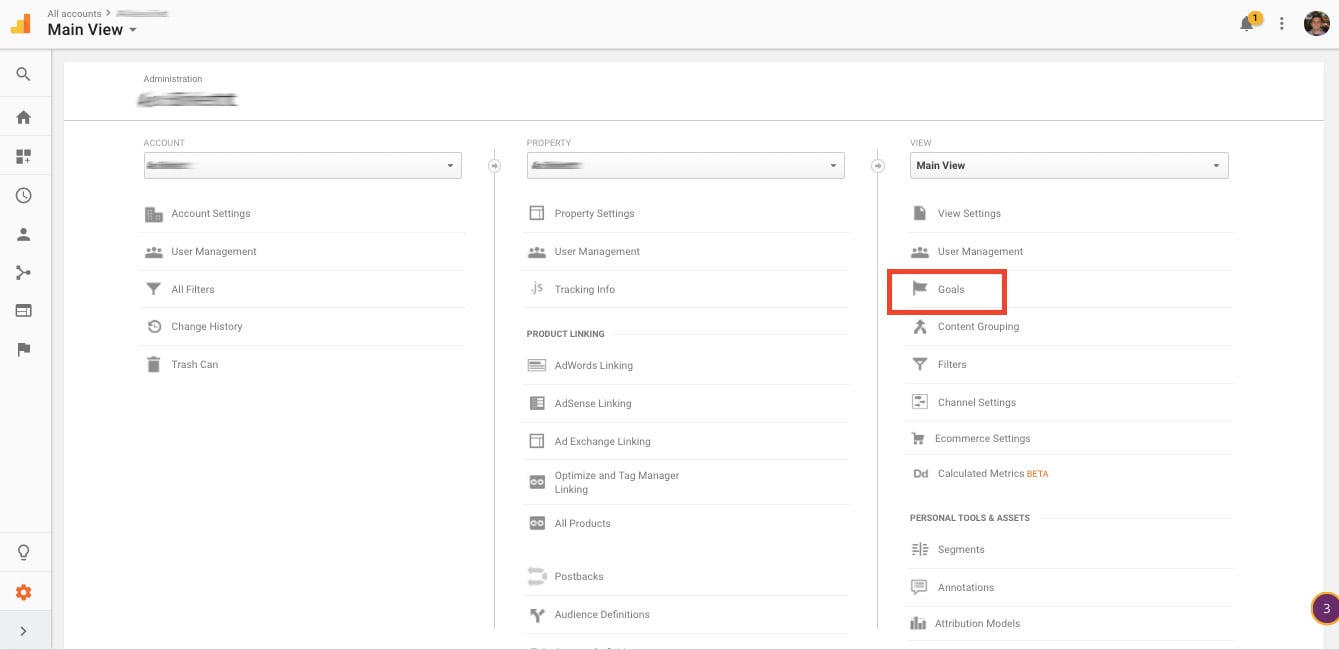Recognizing What Data Is Google Analytics Goals Unable to Track
Recognizing What Data Is Google Analytics Goals Unable to Track
Blog Article
Revealing the Blind Spots: Comprehending What Google Analytics Goals Can not Gauge
In the realm of electronic analytics, Google Analytics stands as an effective device for monitoring and evaluating on-line individual interactions. Recognizing what Google Analytics goals can not gauge is critical for obtaining a thorough view of user actions and engagement.
Customer Actions on External Operatings Systems
Comprehending how customers communicate on exterior platforms is vital for enhancing on-line techniques. Exterior platforms, such as social networks networks, reference internet sites, and on the internet forums, play a significant function in driving website traffic to a business's web site. By examining individual behavior on these systems, services can gain valuable understandings into the efficiency of their advertising and marketing efforts and the preferences of their target audience.
One key element of user behavior on outside platforms is the referral resource. By tracking where the individuals are coming from, companies can recognize which systems are driving the most traffic to their site. This details can help business allocate their resources more properly, focusing on the platforms that yield the very best outcomes.

Offline Conversions and Communications
Examining individual habits on outside platforms offers important insights into online strategies; nonetheless, taking into consideration offline conversions and communications is just as imperative for a comprehensive understanding of a firm's total efficiency. While Google Analytics excels at tracking online communications, it falls short in recording the complete customer journey that commonly consists of offline touchpoints. Offline conversions, such as in-store purchases or phone questions, play a substantial function in several organizations' success. Ignoring these interactions can lead to an altered sight of the performance of advertising and marketing campaigns and total business performance.

Acknowledgment Beyond Last Click
When diving into the world of digital advertising analytics, it ends up being necessary to look beyond the single touchpoint of the last click for a more detailed understanding of acknowledgment. While Google Analytics offers beneficial insights into user actions, counting only on last-click attribution can be restricting - what data is google analytics goals unable to track. Acknowledgment models that exceed the last click provide a more nuanced view of the customer journey, considering all the touchpoints that result in a conversion
Attribution past the last click enables marketing professionals to designate credit score to different interactions along the conversion course, offering a clearer picture of the efficiency of different advertising and marketing networks. By checking out multi-touch acknowledgment versions such as direct, time degeneration, or position-based acknowledgment, businesses can better designate their marketing budget plans and maximize their strategies for maximum effect.
Understanding the impact of each touchpoint in the conversion process is critical for making educated decisions and maximizing ROI. By embracing attribution beyond the last click, organizations can obtain much deeper understandings right into client actions and tailor their marketing initiatives extra efficiently.
Cross-Device and Cross-Browser Monitoring

Likewise, cross-browser tracking matches cross-device monitoring by recording individual actions as they switch between different web browsers. Recognizing just how why not check here customers engage with websites on different browsers can assist marketing professionals enhance their on-line experiences to ensure consistency and performance across different systems.
Qualitative Data and Customer Intent
Understanding customer intent through qualitative information evaluation is crucial for developing targeted digital advertising methods that resonate with the demands and choices of the target audience. Qualitative information provides insights right into the 'why' behind individual actions, shedding light on inspirations, feelings, and choices that measurable information alone can not catch. By evaluating user responses, remarks, and communications, marketing professionals can uncover beneficial details concerning customer intent, permitting them to customize their messaging, content, and offerings to better align with what their audience is seeking.
Qualitative information likewise aids in comprehending the context in which users engage with a website or application. This contextual understanding enables marketing professionals to create even more appropriate and personalized experiences, eventually driving higher involvement and conversion prices. By delving into customer intent with qualitative information analysis, companies can obtain a deeper understanding of their target market, resulting in extra efficient advertising and marketing techniques that fulfill customers' expectations and demands.
Verdict
In verdict, Google Analytics objectives have limitations in measuring individual habits on external platforms, offline conversions, attribution past last click, cross-browser and cross-device monitoring, and qualitative data associated with individual intent. what data is google analytics goals unable to track. It is necessary for businesses to be conscious of these dead spots in order to supplement their data analysis with various other tools and methods to get a more extensive understanding of their target market and boost their overall electronic advertising approaches
By analyzing individual habits on these systems, businesses can acquire useful insights right into the performance of their marketing efforts and the choices of their target audience.
Assessing customer behavior on outside platforms provides valuable insights right into on-line methods; nonetheless, taking into consideration offline conversions and communications is equally vital for an extensive understanding of a business's general efficiency.In electronic advertising analytics, relocating beyond last-click attribution to check out learn the facts here now cross-device and cross-browser tracking is necessary for getting an alternative understanding of individual interactions across various systems and tools. By assessing customer comments, comments, and interactions, online marketers can discover valuable information concerning customer intent, enabling them to customize their messaging, material, and offerings to better align more information with what their target market is looking for.
By diving right into customer intent with qualitative data evaluation, organizations can get a deeper understanding of their target audience, leading to extra reliable marketing strategies that satisfy users' expectations and needs.
Report this page